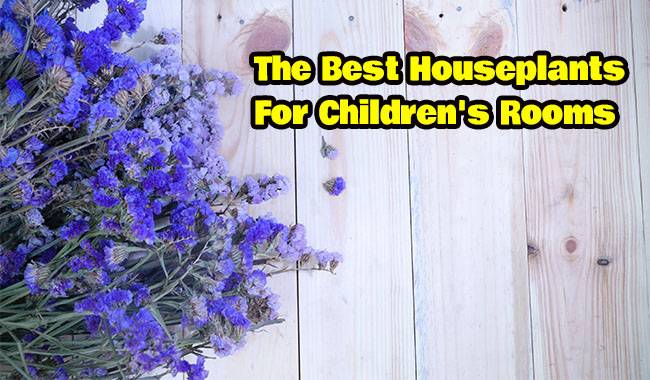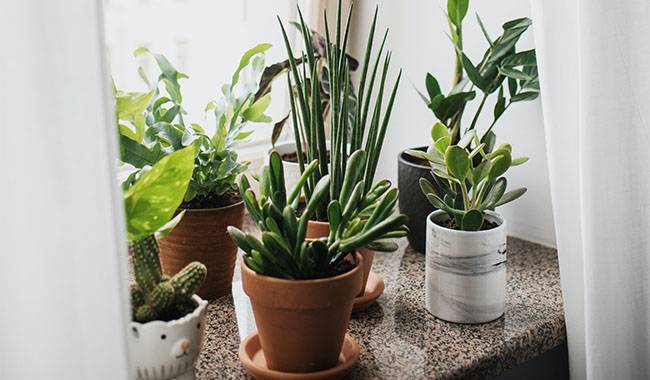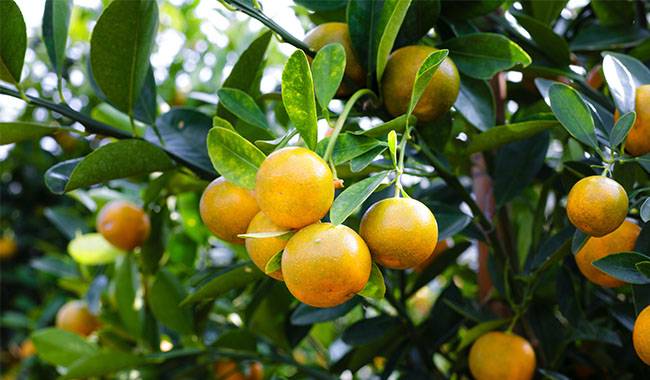
When choosing plants for children, it is often the other way around – looking for crops that can be used without causing harm. It’s true that there are many plants that are poisonous, and others that are simply incompatible with the design of a child’s space due to their thorns, tough leaves, or deceptively appetizing appearance. Still, if you want to find plants that will become colorful in your child’s life, you should use other criteria. After all, it is better to choose the most useful species for a child’s room than the least dangerous. You will learn about The Best Houseplants For Children’s Rooms in the ThumbGarden article.
Criteria For Choosing Plants For Your Child’s Room
Assessing the usefulness of indoor crops is not the most popular choice. The reason for this may be the generally accepted criteria for evaluating plants, where toxicity is considered the most important negative “symptom”. However, the ways in which plants clean the air or affect the atmosphere are often not mentioned at all.
Instead of looking for less harmful or less dangerous plants, simply list the features that are unacceptable in children’s rooms. Focus instead on something else – how plants can be beneficial to a room where your baby spends a lot of time.
All houseplants produce oxygen and contribute to a healthy environment. But the “freshening effect” is not the most important of the range of positive effects that plants have on our homes. The decisive criteria for choosing useful plants for children should be the following.
- Color and harmonizing effect on the surrounding space.
- The ability to neutralize and absorb toxins and harmful substances (including those from furniture and detergents)
- Pesticide properties of plants.
- Noise absorption properties.
With the right plants, you can create a comfortable and healthy atmosphere with a few plants as possible. In children’s rooms, even the classic number of potted plants in the rest of the room is inappropriate. Only 3 to 5 small and medium-sized plants or 1 to 2 large plants are accepted here, corresponding to the “amount” of their effectiveness.
And they must always be kept in a spotless condition: cleanliness, hygiene, timely leaf cleaning, and removal of plant debris are the only guarantees that the plants in the children’s room will perform their “function”.
The Psychological Impact Of Plants On Children – Best Houseplants

When looking for original, colorful, and space-enhancing types of houseplants for children’s rooms, the first thing to consider is how they affect the aesthetics and psychology of the room. The fact that even a single plant can create or destroy harmony is well known not only to ancient feng shui experts but also to interior designers.
Tip: Choosing the right indoor plants can both emphasize and hide all the shortcomings of the room itself, furniture, and even textiles.
Color – is the most important selection criterion. For children’s rooms, you usually try to choose plants with basic, clean, “acrylic” colors, which are the most colorful options. However, green is the strongest color in a children’s room.
It brings tranquility and a soothing effect on the nervous system, allowing you to find balance and harmony between the active and resting phases. Do not choose the brightest, but a medium to light, soft green – with a slight off-white, gray tint, or softened with a downgrade.
Other criteria are best guided by internal and general rules of thumb. If you choose openwork textures, transparent, layered unstructured silhouettes, house plants will soften straight lines and sharp angles.
To delineate space and keep zones separate from each other, you can visually expand the “volume” of a room by choosing elegant, slender tree-shaped plants with small leaves or lush shrubs rather than large foliage.
Creating a comfortable environment in the work area and pulling together important corners for studying, reading, and hobbies will also contribute to the rosette effect of turf, “pillows” and small accents.
In terms of color and spatial impact, citrus plants, purlins, scarves, herbs (rosemary, thyme, oregano), geraniums, and chlorophyll are rightly considered ideal for children. The foliage of the geraniums is also soothing with the sight of their delicate color palette.
Plants With Insecticidal Effect – The Most Suitable Plants For Children’s Rooms
The category of insecticidal plants is highly conventional. All plants that produce essential oils and bioactive substances with immune-boosting and air disinfecting properties fall into this category. Insecticides reduce the number of pathogens, bacteria, and fungi by at least two times.
For example, paraquat can even “kill” staphylococcus and streptococcus-like bacteria. Roots and tubers can have beneficial effects on the immune and defense systems, even after spending half an hour around them.
These are mood-enhancing and well-being-enhancing species that are often given “magical” properties-relief of headaches or depression. But this is actually the effect of essential oils, which are barely perceptible in the air.
The best insecticide ingredient for children’s rooms.
peperomia;
aspidistra high;
pelargoniums;
oriental flat weed;
lemon;
mandarin;
lime;
orange;
kalanchoe pinnate;
fragrant Kalanchoe;
aloe vera and tree (varieties with non-thorny leaves);
Chinese hibiscus;
English or French lavender;
Myrtle ordinary;
Arabian coffee.
The fashion for growing your own herbs and remedies in pots is slowly spreading beyond the kitchen. Pungent herbs, with antiseptic properties no less than those of native indoor dwellers, not only improve and heal the air: they grow quickly, have interesting textures, taste delicious, cut well, and look gorgeous.
Rosemary is one of the best plants for the prevention of colds and respiratory diseases and will be happy to live in the rooms of children. But watch out for other stars, such as thyme, especially the brightly colored original varieties, marjoram, oregano, chives, and chives with fine leaves, mint, lemon balm, catnip, and vegetable oils.
In the “useful” and edible plants section, it is also safe to add potted strawberries, both of which look surprisingly cheerful and capable of presenting a healthy treat. Today, potted versions of fruit trees – even cherry or cherry trees – are increasingly being sold. But they are more suitable than citrus trees, which change the atmosphere of a room in a surprising way.
“Roadblocks” When Choosing Plants For A Child’s Room

A child’s room is the easiest place to choose the type of houseplant. After all, it’s obvious which plants shouldn’t be used and why not. It is sufficient to have a list of criteria at hand, which should immediately lead to the exclusion of the species from a suitable shortlist.
Houseplants with any “dangerous” characteristics are unconditionally prohibited.
- the presence of dangerous bristles or thorns
- leaves with too hard or sharp edges that could be injured (e.g., cereal leaves are no less harmful to the skin than thin paper)
- plants with too strong or unpleasant odors
- cultures belonging to the toxic category – with irritating mucus and skin sap, toxic only when taken orally
- species to which children are allergic, their relatives, and all allergen-hazardous plants
- plants that require complex care and special environments, including those kept in display cases or botanical gardens.
Dear reader, be sure to consult your child when choosing plants. If he or she is already interested in growing, choose species that will easily “bear fruit” even if they are not well cared for. In any case, the one who does not make demands and tolerates surprises is always the best choice.







